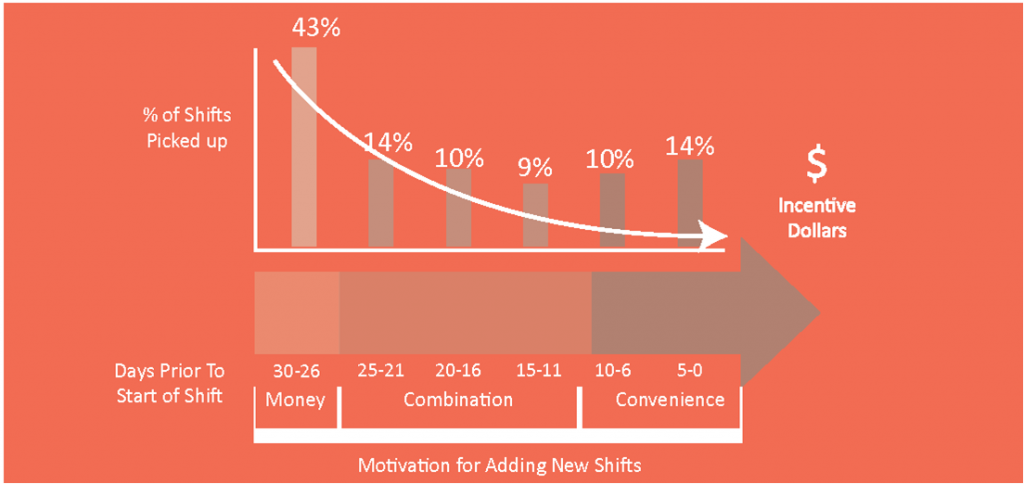“Shift bidding” is a popular method of open shift management with advertised benefits of improving retention and reducing the costs associated with filling open shifts. It is promoted as a timesaver for managers and a staff satisfier as it puts control of the shift into the staff member’s hands.
In the shift bidding process, staff members are able to “bid” on an open shift by entering the lowest wage they would be willing to work the shift. Staff members compete with each other by dropping their wage rate (reverse auction) in order to win the shift. After the bidding closes a manager will review the bids and usually, but not always will award the open shift to the lowest bidder – a manager has the discretion to award a shift to the employee of their choice, regardless of bid.
There is much inefficiency inherent in this process and the reverse auction methodology.
According to our clients who have abandoned this method of open shift management, shift bidding is a reactive and cumbersome, multi-step process that puts unnecessary burden on managers, creates animosity between staff members, and is responsible for increased labor costs.
Other flaws in the shift bidding process include:
- Severity of need is not taken into account
- Staff members must routinely login to ensure they are the lowest bidder
- Managers must log in, weigh and select which staff member they will award each shift
- Concerns of manager favoritism can develop, which erodes morale
Effective Open Shift Management
Avantas pioneered a method of open shift management in 2004 which uses predictive analysis to forecast patient volume. Based on the census forecast, open shifts are posted within the software for qualified staff members to pick up. The incentive range is set by each hospital system in line with their budget. Those incentives fluctuate in real-time relative to need.
Incentives do not increase as the day of the shift approaches, but drop as shifts are picked up and the severity of the need to fill holes decreases. This protocol promotes proactive scheduling by providing the highest incentives 30 days in advance of the shift.
No manager administration is needed as organization business rules are embedded into the system. Only staff members who are qualified to work on a specific unit and have been oriented to that unit will be able to sign up for that shift.
Avantas recently conducted a study to gauge the effectiveness of this model. The research was conducted at two multi-hospital systems, one in the Midwest and one in the eastern United States.
Data gathered over the course of the study pointed strongly to the effectiveness of a model of decreasing financial incentives as shift dates approach. As the following figure illustrates, 75% of shifts were picked up more than two weeks before the day of the shift, and 43% of shifts were picked up 30 days in advance, when peak incentives are offered.
The results of this study are contained in the whitepaper:
Open Shift Management: Understanding Staff Motivations is Key to Filling Shifts



